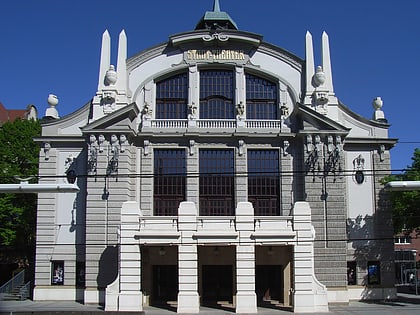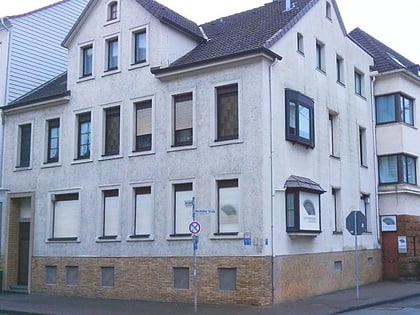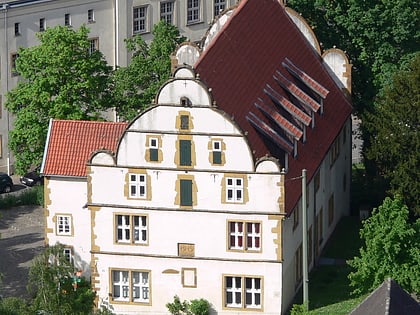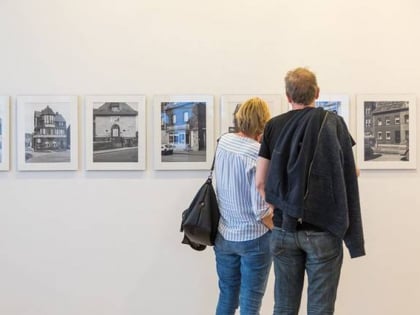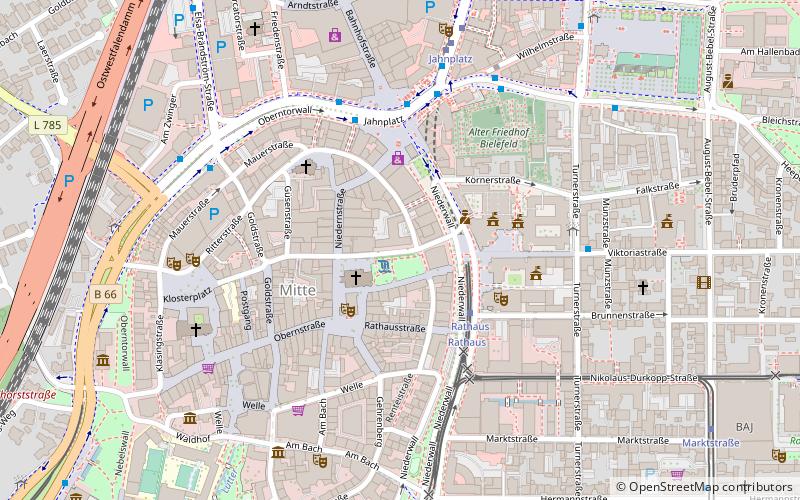Jakobuskirche, Bielefeld
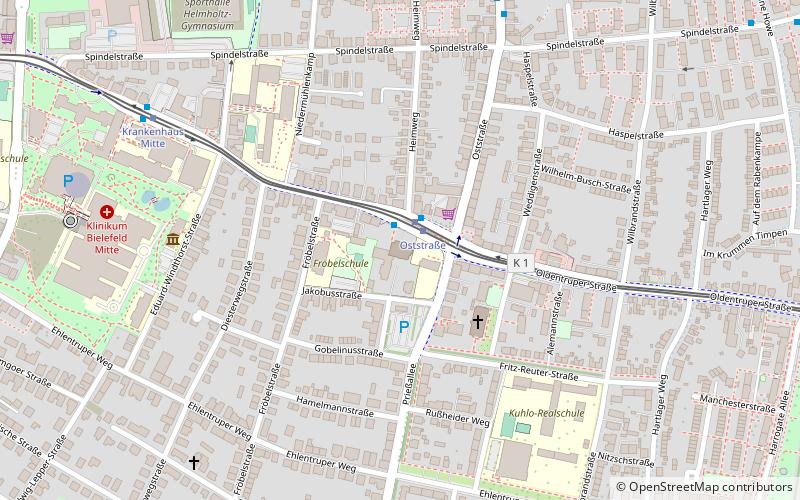

Facts and practical information
The Evangelical Lutheran Jakobuskirche in Bielefeld's Mitte district, Jakobusstraße 3, was built in 1912 in a mixture of Art Nouveau and Reform architecture. Initially, the church did not include the large parish hall and steeple that exist today, but only the nave. This used to be used for meetings and other community events in addition to church services.
Four windows of the church from 1922/23 are works of the glass painter Karl Muggly.
In 1938, the church was extended by a parish hall with three large apartments in the attic and a church tower with four bells. Today, three bells made of chilled iron are preserved. They were cast in 1928 by the Schilling and Lattermann foundry in Apolda and ring in the tones ges, as and es'.
From 1930 to 1963, interrupted only by the war effort, Wilhelm Niemöller, Martin Niemöller's brother, officiated as pastor at the Jakobuskirche. Until 1958, the Jakobuskirche belonged to the parish of the Neustadt Marienkirche. In 1958, the independent Jakobusgemeinde was created by parish separation. In 2007, the congregation, which belongs to the Evangelical Church of Westphalia, has about 4000 members.
Jakobuskirche – popular in the area (distance from the attraction)
Nearby attractions include: Sparrenburg, Kunsthalle Bielefeld, Bielefeld Opera, Deutsches Fächermuseum.
Frequently Asked Questions (FAQ)
Which popular attractions are close to Jakobuskirche?
How to get to Jakobuskirche by public transport?
Bus
- Oststraße • Lines: N9 (1 min walk)
- Spindelstraße • Lines: 196, 369 (7 min walk)
Light rail
- Oststraße • Lines: 4 (1 min walk)
- Krankenhaus Mitte • Lines: 4 (7 min walk)
Train
- Bielefeld Ost (20 min walk)
- Bielefeld Main Station (34 min walk)



